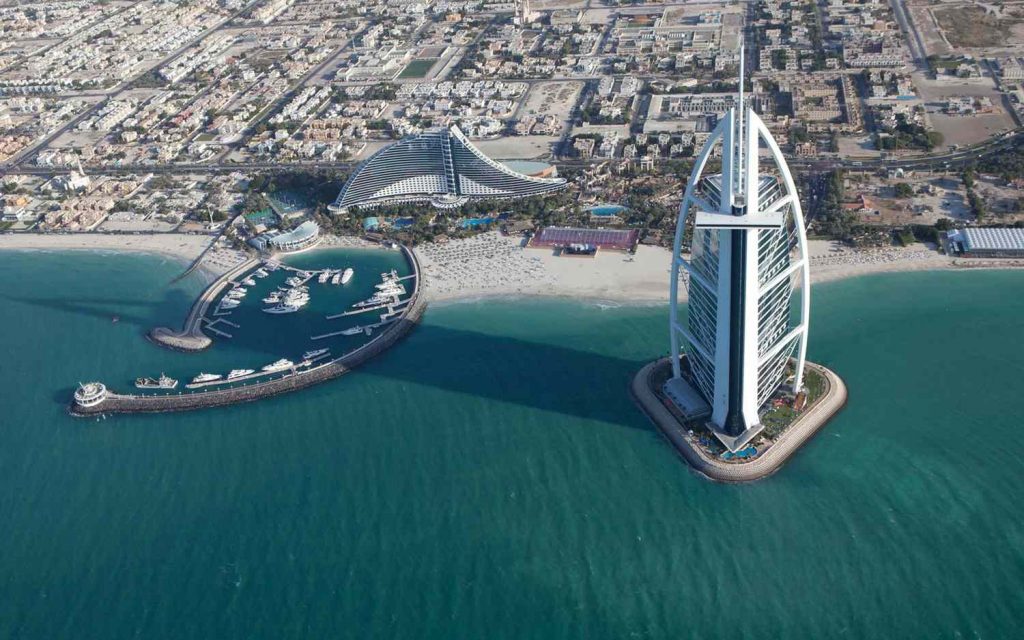Mankind has been fighting against nature since its evolution. But the motive has changed over time. Initially, the fight was to fulfill basic requirements like food, shelter, and clothes; now, the same has changed to taming it primarily with technology to establish authority by today’s powerful nations. A few examples are cited here.
Land reclamation in the emirate of Dubai has made it one of the most famous areas in the world through its augmentation of Palm Islands, World Islands, Dubai Marina, and Burj Al Arab. Countries like South Korea, the USA, and Japan have also reclaimed significant land from nature. We have not only taken back land from oceans and seas but also carved hills worldwide through blasting or tunneling for various purposes like residential, tourism, communication, or power generation.
Underground cities have been built to combat extreme weather because they allow activities comfortably throughout the year irrespective of the weather. Australia (Sydney), Canada (Montreal, Toronto), China (Beijing, Guangzhou) are some such examples.
In the recently concluded FIFA World Cup 2022, Qatar maintained temperatures at about 68°F inside the stadium, irrespective of conditions outside. The technology, developed by Qatar University, cools air and distributes it via grills in the stands and through pitch-side nozzles. Using the air circulation technique, warm air is drawn back, re-cooled, purified, and pushed out where needed.
Cloud seeding is a type of weather modification that aims to change the amount or type of precipitation that falls from clouds by dispersing substances into the air. The usual objective is to increase or prevent precipitation (rain or snow) depending on the situation. Since 2021, the UAE has used drones with sensors and a payload of electric-charge emission instruments that fly at low altitudes and deliver the electric charge to air molecules. This new technology produced a significant rainstorm in July 2021.
China became the first nation to host the Winter Olympics 2022 using artificial snow. China used ‘snow cannons’ that spray ice particles and a thin mist of water vapor sixty meters above the ground, where these particles combine to become snow and then fall. On 13 October, 2022, the US announced a five-year research plan to artificially modify the Earth’s climate. This will use geoengineering to manage solar radiation by spraying fine aerosols into the atmosphere to reflect sunlight away from the Earth. It is contemplated that the Earth will have less heat once sunrays are reflected.
Back home, Joshimath, Uttarakhand has been hit by a geological phenomenon known as land subsidence. Joshimath is in a tectonically active seismic zone and the landslide debris on which the city was established has a low bearing capacity. Increased construction, hydroelectric projects, and widening the National Highway have made the slopes highly unstable in the last couple of decades.
Mankind had not stopped its aggressive stance on land; aquatic pollution has already started affecting the flora and fauna. According to the United Nations, over 800 species worldwide are affected by marine debris, 80% of which is plastic. It is estimated that up to 13 million tonnes of plastic get added to the ocean each year. Fish, seabirds, sea turtles, and marine mammals get entangled in or ingest plastic debris, causing suffocation, starvation, and drowning. As humans, we are not immune too. Plastics may take up to hundreds of years to fully decompose; but some break down much quicker into tiny particles, ending up in the seafood we eat.
After polluting the ‘jal’ and ‘sthal’, the latest casualty seems to be the ‘antariksh’ (space). Topping the list is the competition between developed countries to send satellites, rockets without caring a bit for the accumulation of debris or taking the onus of clearing the same. As the fallout of all the rockets we’ve launched over the years, orbiting our planet are 2000 active satellites, 3000 dead ones, along with 34000 pieces of space junk bigger than 10 cm in size and millions of smaller pieces that can cause disasters if they hit something else. Although most debris burns up in the atmosphere causing atmospheric pollution, larger debris can reach the ground intact. According to NASA, on average, one piece of debris has fallen back to Earth daily for the past 50 years. Despite their size, luckily, there has been no significant damage from such debris. However, when and how the same will hit us is completely unknown.
But, do we really believe we can colonise Mars? To tame Mars, are we not alienating Mother Earth?
At the COP26 in Glasgow some time back, several businesses, apart from governments, pledged to go carbon-free, setting ambitious deadlines for themselves. Essentially, it meant that these establishments would reduce emissions or balance new emissions by using natural carbon sinks like forests and oceans to absorb them. Indian firms are increasingly embracing environmentally conscious practices to pursue sustainable growth and net-zero carbon emissions.
Let us strive to make technology the solution and not the problem!
Bhaskar Basu is a Professor in Xavier Institute of Management-XIM University, Bhubaneswar. Subhasis Ray is a management consultant and a faculty member at IISWBM, Calcutta.
